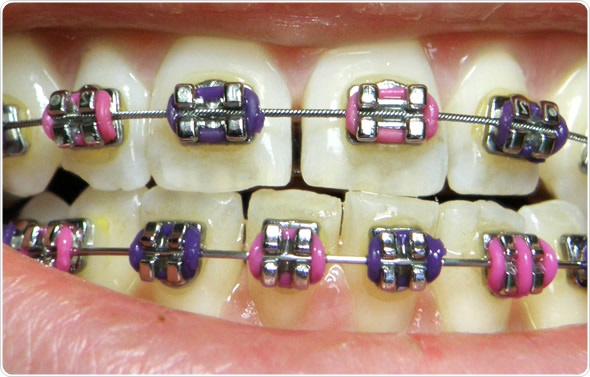Your Guide to Cumming Invisalign: Straightening Teeth with Style and Convenience
Your Guide to Cumming Invisalign: Straightening Teeth with Style and Convenience
Blog Article
Comprehensive Overview to Orthodontics Procedures for Dealing With Oral Imbalances
In the realm of orthodontics, the journey to attaining a perfectly lined up smile entails a myriad of procedures tailored to correct oral misalignments. From typical dental braces to unnoticeable aligners and even surgical options, the area of orthodontics uses a variety of remedies to address varying degrees of dental irregularities. Recognizing the complexities of each treatment, including their devices, advantages, and possible drawbacks, is essential in making informed choices concerning one's orthodontic therapy. As we navigate through the extensive guide to orthodontic procedures for dealing with oral misalignments, the intricate information of each approach will unravel, clarifying the path toward a useful and unified oral alignment.
Orthodontic Procedures Summary

Normal changes and surveillance are vital parts of orthodontic therapy to ensure development is on track and to make any necessary alterations along the method. By undergoing orthodontic procedures, individuals can not only achieve a straighter grin however likewise improve their total oral wellness and function.
Typical Braces: Just How They Work
When taking into consideration orthodontic treatments for oral imbalances, conventional braces attract attention as a reliable technique for remedying teeth positioning. Conventional braces are composed of braces, cords, and bands that interact to apply continuous stress on the teeth, slowly relocating them right into the preferred positioning. The brackets are affixed to the teeth making use of a special adhesive, and the wires are threaded with the braces. By readjusting the tension of the cords, orthodontists can control the instructions and pressure applied to each tooth, leading them right into appropriate positioning gradually.
One key aspect of exactly how conventional dental braces job is the procedure of bone renovation. As stress is related to the teeth via the dental braces, the bone surrounding the teeth is reshaped to support the new tooth placements. This improvement is important for the long-term stability of the dealt with placement. People will require routine modifications at the orthodontist's office to make certain the braces remain to use the correct pressure for efficient teeth motion.
Unseen Aligners: Pros and Cons
Unseen aligners use a hassle-free and discreet option to traditional dental braces for correcting dental misalignments. These clear, custom-made trays are basically invisible when used, making them an enticing option for individuals looking for a more visually pleasing orthodontic therapy. Among the key advantages of invisible aligners is their removability, allowing for less complicated upkeep of dental hygiene contrasted to conventional braces. Patients can remove the aligners before eating or best dentist in cleaning their teeth, lowering the danger of food getting embeded the appliance and streamlining the cleaning procedure.

Surgical Orthodontic Options
Surgical interventions in orthodontics present practical choices for dealing with complex oral misalignments that might not be successfully solved via conventional orthodontic treatments. While traditional dental braces and unseen aligners can remedy several orthodontic concerns, certain cases call for surgical treatment to accomplish ideal results. Surgical orthodontic options are commonly suggested for extreme malocclusions, considerable jaw disparities, and instances where the underlying bone structure requires modification to accomplish proper placement.
One usual medical orthodontic procedure is orthognathic surgical procedure, which involves rearranging the jaws to deal with useful problems such as problem speaking or chewing. This surgical treatment is usually done in cooperation with an orthodontist who helps straighten the teeth prior to and after the procedure. Surgical orthodontics may additionally involve procedures to reveal affected teeth, eliminate excess gum cells, or reshape the jawbone to develop a much more harmonious facial profile.
Prior to taking into special info consideration medical orthodontic choices, patients undergo an extensive assessment to identify the need and prospective advantages of such interventions. orthodontics. While surgical treatment may appear daunting, it can dramatically boost both the feature and aesthetic appeals of the smile in instances where traditional orthodontic therapies fail
Retainers and Post-Treatment Treatment

Failure to comply with post-treatment care guidelines can result in relapse, where the teeth slowly move back towards their initial placements. Constant retainer wear, great oral health, and regular dental examinations are vital for preserving the outcomes attained with orthodontic surgery and making sure the long-term security of the fixed oral placement.
Final Thought
Finally, orthodontic treatments provide different choices for remedying oral imbalances. Typical dental braces make use of steel brackets and wires to shift teeth into correct alignment. Undetectable aligners give an even more very discreet option but may not appropriate for all instances. Surgical orthodontic choices are offered for a lot more serious misalignments. Retainers are generally utilized post-treatment to preserve the new alignment. Generally, orthodontic treatments can effectively boost dental health and wellness and visual look.
As we navigate via the comprehensive overview to orthodontic procedures for dealing with oral misalignments, the elaborate information of each method will unfold, losing light on the course towards a useful and unified dental alignment. - cumming orthodontist
One of the most usual orthodontic treatments is pop over to this site the use of dental braces, which are composed of metal braces and wires that apply gentle pressure to gradually change teeth right into the desired position.When considering orthodontic treatments for oral misalignments, standard braces stand out as a tried and true technique for remedying teeth positioning. Furthermore, invisible aligners may not be ideal for complicated orthodontic issues that call for more considerable teeth movement, as they are commonly recommended for mild to modest instances. Retainers are custom-made orthodontic tools created to hold teeth in their dealt with settings after the completion of orthodontic treatment.
Report this page